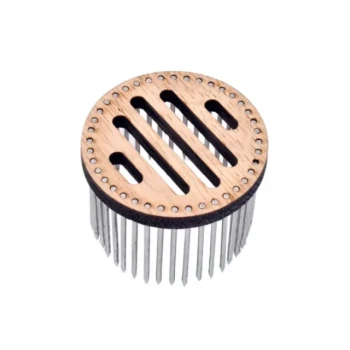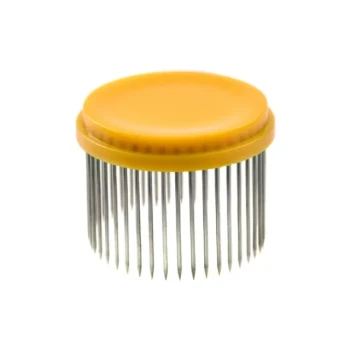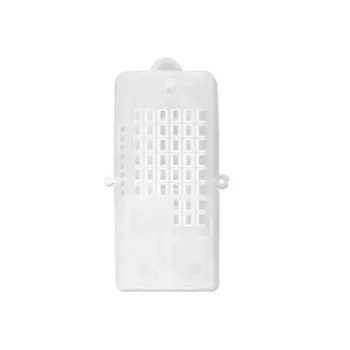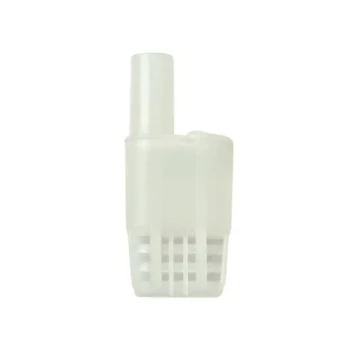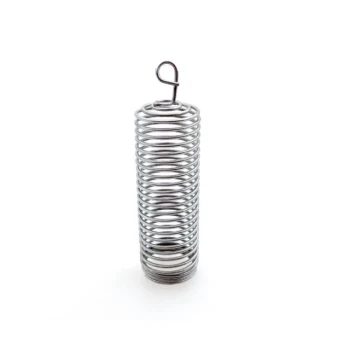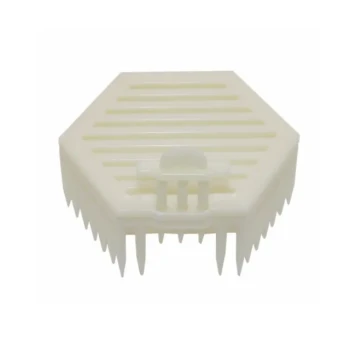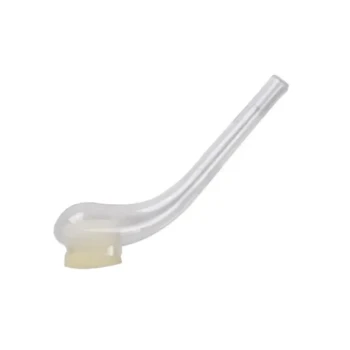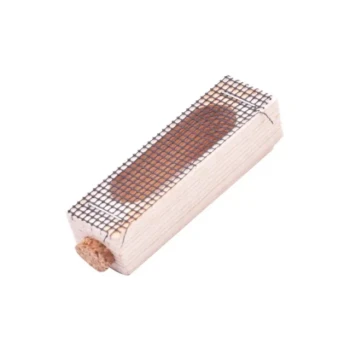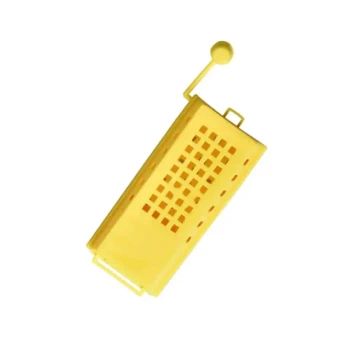At its core, a push-in queen cage is a tool designed for a high-success introduction by allowing a new queen to begin laying eggs directly on the comb while remaining protected. This is the fundamental difference from standard cages, which keep the queen completely isolated from the comb until her release. The act of laying eggs establishes her value to the colony before she has full contact, dramatically increasing acceptance rates.
The primary challenge in queen introduction is convincing a colony to accept a stranger. A push-in cage solves this by allowing the queen to prove her worth and establish her pheromonal signature on the brood nest itself, shifting her from a "foreign threat" to the colony's "new mother" before she is even released.
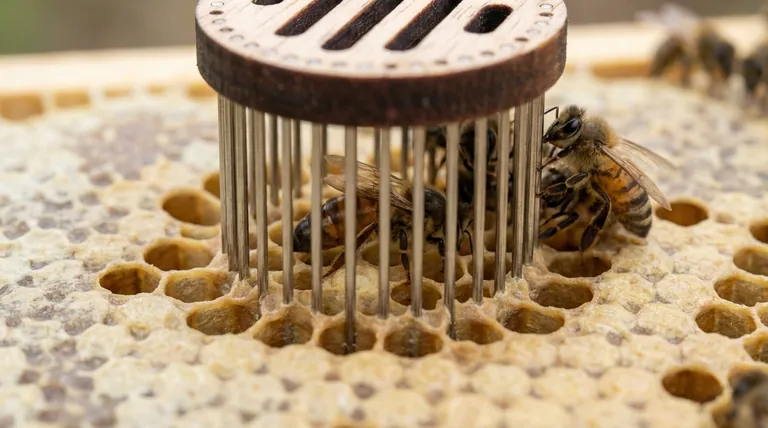
The Principle: Simulating a Natural Supersedure
A successful queen introduction hinges on managing bee behavior and pheromones. The method of introduction directly influences how the colony perceives the new queen.
How Standard Cages Work
Standard introduction cages, often small wooden or plastic boxes, keep the queen and her attendants separate from the colony. Worker bees can interact with her through a screen, slowly sharing pheromones. Release is often delayed by a candy plug that the bees must chew through.
This method creates a distinct "us vs. them" barrier. The queen is treated as a foreign object until she is finally released, at which point the colony makes a final decision on acceptance or rejection.
How Push-In Cages Establish Immediate Value
A push-in cage is essentially a "protected arena" placed directly onto a frame of honeycomb. It has no floor, allowing the queen direct access to the cells below her.
By enclosing her over a suitable patch of comb, you allow her to perform her primary function: laying eggs. The presence of her eggs and her pheromones on the comb sends a powerful signal of viability to the rest of the hive.
The Power of Brood Pheromones
When the queen begins to lay, she is not just proving she is fertile. She is also initiating the brood production cycle. The combination of the queen's own pheromones and the scent of newly laid eggs is a potent message that the colony is healthy and has a future. This dramatically reduces the risk of the workers "balling" or killing her upon release.
Implementing the Push-In Method
Proper execution is key to leveraging the benefits of a push-in cage. It requires more intervention than a standard cage but rewards the beekeeper with a higher success rate.
Step 1: Select the Right Comb
Choose a frame that contains a patch of emerging brood. As new bees hatch, they will immediately accept the only queen they know—the one inside the cage with them. The area should also have empty, drawn cells for her to lay in and a few cells of nectar for food.
Step 2: Place the Queen
Gently place the new queen on the selected patch of comb. A few attendant bees can be included. Firmly press the push-in cage into the comb, ensuring its edges are buried deep enough into the wax so that the queen cannot escape underneath.
Step 3: Confirmation and Release
After one to three days, briefly inspect the frame. You should see the queen actively laying eggs in the cells within the cage. Once you confirm she is laying, you can simply remove the cage.
Because she has already been functioning as the hive's mother from within her protected space, the workers will have already accepted her. The formal "release" is often a non-event, as the colony has already made its decision.
Understanding the Trade-offs
No single method is perfect for every situation. Understanding the advantages and disadvantages is critical for making an informed decision.
Advantage: Highest Acceptance Rate
For difficult introductions—such as into a long-queenless or aggressive colony—the push-in cage offers the best possible chance of success. It is the gold standard for securing valuable or hard-to-replace queen genetics.
Disadvantage: More Intrusive
This method requires the beekeeper to open the hive, find a specific type of comb, and manually place the queen. This is more disruptive and time-consuming than simply hanging a standard cage between two frames.
Disadvantage: Potential Comb Damage
Pressing the cage into the comb will damage the cell structure under its walls. While bees are excellent at repairs, it is a minor point of damage that a standard cage does not cause.
Making the Right Choice for Your Goal
Your choice of introduction method should be a strategic decision based on the state of your colony and the value of your queen.
- If your primary focus is speed and minimal disruption in a calm colony: A standard cage with a candy plug is often sufficient and effective.
- If your primary focus is ensuring the survival of a valuable queen or requeening a difficult colony: The push-in cage is the superior method, as it minimizes the risk of rejection.
Ultimately, a successful queen introduction is about strategically managing risk to ensure the long-term health and productivity of your hive.
Summary Table:
| Feature | Push-In Cage | Standard Cage |
|---|---|---|
| Primary Goal | Highest acceptance rate | Standard introduction |
| Queen's Access to Comb | Direct access to lay eggs | Isolated until release |
| Best For | Valuable queens, difficult colonies | Calm colonies, minimal disruption |
| Hive Intrusion Level | Higher (requires comb selection) | Lower (hangs between frames) |
| Key Advantage | Queen proves value before release | Simple, less disruptive process |
Ensure the Success of Your Most Valuable Queens
Maximizing queen acceptance is critical for the health and productivity of your apiary. The right equipment makes all the difference. HONESTBEE supplies high-quality beekeeping supplies and equipment, including push-in cages, to commercial apiaries and beekeeping equipment distributors through our wholesale-focused operations.
Let us help you protect your investment and improve your hive management outcomes. Contact HONESTBEE today to discuss your wholesale equipment needs.
Visual Guide

Related Products
- Premium Wood and Steel Push In Queen Cage
- Professional Round Push-In Queen Cage with Metal Tines
- Wood and Mesh Push-In Queen Cage
- Professional Multi-Functional Queen Bee Cage
- Durable Plastic Push In Queen Bee Cage
People Also Ask
- Where should the queen bee's cage be placed in the hive? Maximize Acceptance in the Brood Nest
- How is a press-in cage used for queen installation? Ensure High Queen Acceptance Rates in Your Apiary
- How does a push-in cage improve queen introduction success? Boost Acceptance with Active Queen Demonstration
- What are the steps to introduce a queen using a push-in cage? Ensure High Success for Your Valuable Queens
- How does a press-in cage work for marking a queen bee? A Safer, Simpler Method for Beekeepers
